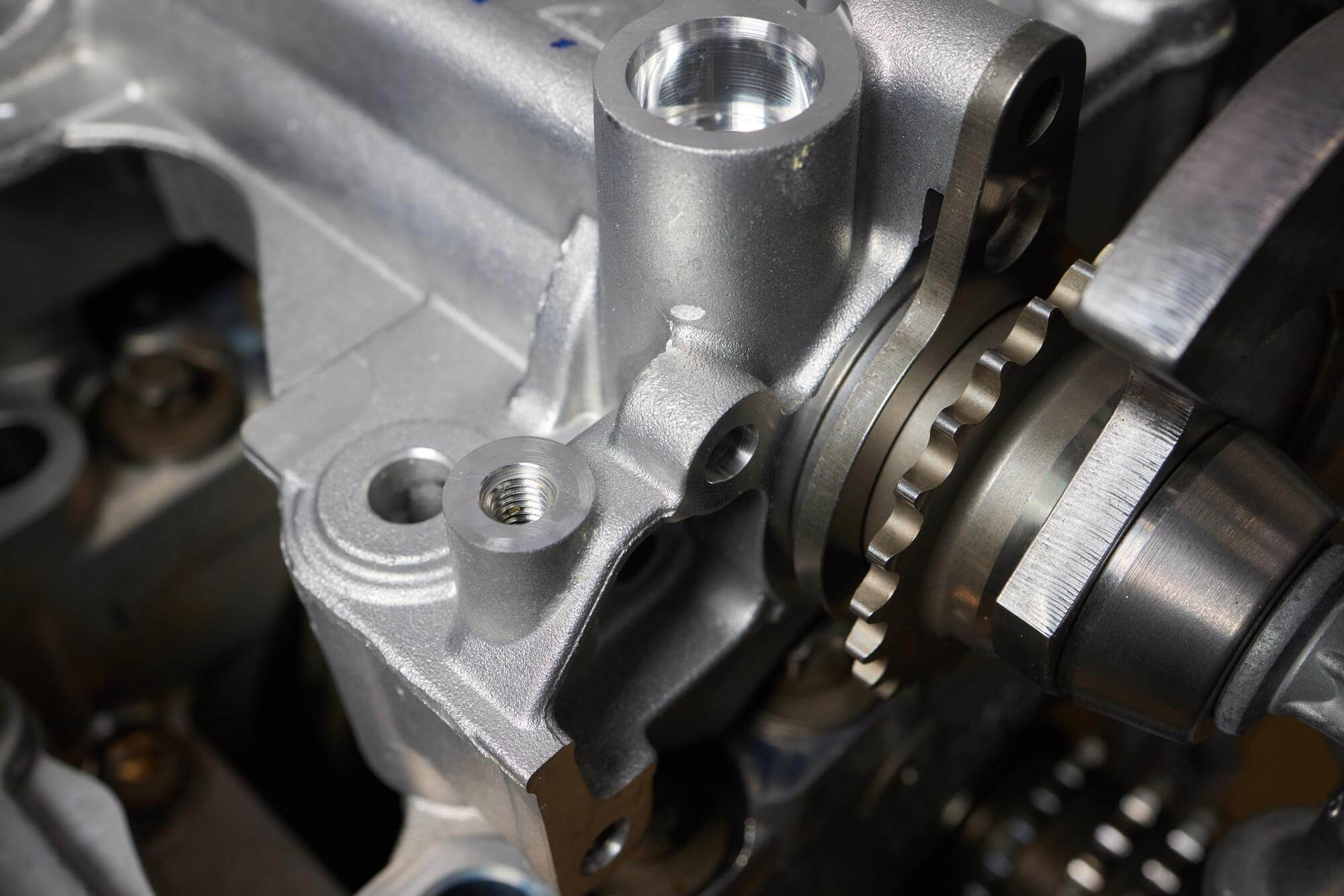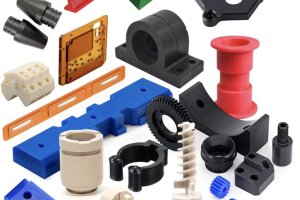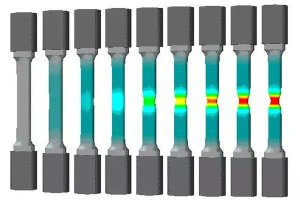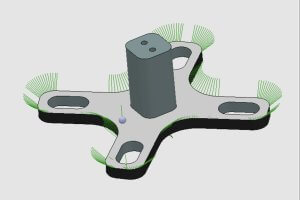1. Introduction
In the automotive, aerospace, and maritime industries, high-temperature alloys have become vital materials for manufacturing components that must withstand extreme temperatures and stress. CNC precision machining has emerged as the preferred solution for producing these complex components, ensuring they meet the tight tolerances required for heavy-duty vehicle parts.
Heavy-duty vehicle components, particularly in engine and exhaust systems, are frequently exposed to extreme mechanical and thermal stresses. High-temperature alloys such as nickel-based and cobalt-based superalloys are ideal for these applications. However, their poor machinability presents significant challenges. CNC machining provides the precise, repeatable, and high-quality machining capabilities needed to handle these tough materials.
2. Overview of High-Temperature Alloys for Heavy-Duty Vehicles
High-temperature alloys, also known as heat-resistant or superalloys, are primarily designed to retain their strength at elevated temperatures while offering excellent resistance to oxidation and corrosion. Heavy-duty vehicle components, such as turbine blades, exhaust systems, and high-pressure valves, require materials that can endure these harsh conditions.
Classification of High-Temperature Alloys
High-temperature alloys can be classified based on production techniques and alloying elements, each with its distinct properties and applications in the heavy-duty vehicle industry:
- By Production Process:
- Deformation High-Temperature Alloys: These alloys are highly ductile at elevated temperatures and can undergo processes such as forging. Common grades include GH2036, GH2132, GH2135, and GH4169.
- Cast High-Temperature Alloys: These alloys contain higher amounts of Fe, Ni, and other strengthening elements such as W, Mo, Ti, and Al. Their high-temperature strength makes them ideal for casting applications but with lower plasticity. Common examples include K214 and K417.
- By Base Element:
- Iron-Based High-Temperature Alloys: These alloys are lower in cost but have poor oxidation resistance at high temperatures. Examples include GH2036 and GH2132.
- Nickel-Based High-Temperature Alloys: Containing over 45% nickel, these alloys have the best oxidation resistance at high temperatures. They are commonly used in critical components such as turbine blades. Examples include GH4037 and GH4169.
- Cobalt-Based High-Temperature Alloys: Known for their strength at temperatures exceeding 1000°C, cobalt alloys are commonly used in high-stress components, though their high cost is leading to their gradual replacement. An example is K10.
3. Challenges in Machining High-Temperature Alloys
When machining high-temperature alloys to produce heavy-duty vehicle components, several significant challenges arise:
Cutting Characteristics of High-Temperature Alloys
- High Cutting Forces: These alloys are exceptionally tough, which results in higher cutting forces compared to traditional steel, often 2-3 times greater. This increased force leads to faster tool wear and greater energy consumption.
- Work Hardening: During machining, these alloys exhibit significant work hardening, meaning the surface of the material becomes harder than the underlying base metal. The work-hardened surface makes subsequent machining passes more difficult.
- Severe Tool Wear: High-temperature alloys often contain carbide, nitride, and boride phases, which act as abrasive particles during cutting. These particles contribute to rapid tool wear through both abrasive and adhesive wear mechanisms.
- High Cutting Temperatures: Due to the low thermal conductivity of these alloys, heat generated during machining is concentrated in the cutting zone, leading to extreme cutting temperatures of up to 1000°C. For instance, machining GH2132 generates cutting temperatures up to 300°C higher than those of standard steel.
These properties make CNC machining the most effective method for processing high-temperature alloys. The precise control CNC machining offers over cutting parameters helps overcome the poor machinability of these materials.
4. CNC Machining Techniques for High-Temperature Alloys
To overcome the difficulties posed by high-temperature alloys, CNC machining techniques must be carefully optimized. The following are key factors for CNC machining these materials:
- Tool Selection: High-performance carbide or ceramic tools are essential for machining high-temperature alloys due to their ability to withstand elevated cutting temperatures and forces.
- Cutting Speed: Lower cutting speeds are necessary to reduce heat buildup. When using carbide tools, cutting speeds typically range between 20-50 m/min depending on the alloy.
- Feed Rate: Moderate feed rates help control heat generation and tool wear. Excessively high feed rates can lead to rapid tool failure and poor surface finish.
- Cooling and Lubrication: Advanced cooling systems, such as high-pressure air or oil-based coolant, are used to maintain tool life by effectively removing heat from the cutting zone.
- Surface Finish and Precision: CNC machining offers the precision required for heavy-duty vehicle components. The target tolerances are often below 40 µm to ensure that components fit precisely into complex assemblies.
Table 1: Recommended CNC Machining Parameters for High-Temperature Alloys
| Alloy Type | Tool Material | Cutting Speed (m/min) | Feed Rate (mm/rev) | Coolant Type | Target Surface Finish |
|---|---|---|---|---|---|
| Inconel 718 | Carbide/Coated | 20-35 | 0.1-0.3 | High-pressure coolant | <40 µm |
| Hastelloy C276 | Ceramic/PCBN | 20-40 | 0.08-0.2 | Oil-based coolant | <40 µm |
| Rene 41 | CBN | 15-30 | 0.1-0.2 | High-pressure air | <40 µm |
| Waspaloy | Carbide/Coated | 25-50 | 0.12-0.3 | Oil-based coolant | <40 µm |
| Haynes 188 | Carbide/Coated | 20-30 | 0.1-0.25 | Oil mist coolant | <40 µm |
By adjusting the cutting parameters to fit the specific alloy, CNC machining can produce high-quality, durable components for heavy-duty vehicles.
5. Precision Requirements for Heavy-Duty Vehicle Components
Precision is essential for components in heavy-duty vehicles that are exposed to high mechanical and thermal loads. CNC machining provides the accuracy required for these components.
- Tolerances: Heavy-duty vehicle parts must maintain tight tolerances, typically within 50 µm, to ensure optimal performance under stress.
- Surface Finish: Surface roughness is another critical parameter, with finishes typically required to be smoother than 40 µm to minimize friction and wear.
- Creep Resistance and Cyclic Load: The machined components must withstand repeated cycles of stress without deforming, which is particularly important in engine components and turbine blades.
6. Tool Wear and Maintenance in Machining High-Temperature Alloys
One of the most challenging aspects of machining high-temperature alloys is managing tool wear. Understanding the types of wear and how to mitigate them is crucial for manufacturers.
Types of Tool Wear:
- Abrasive Wear: Caused by the presence of hard particles in the alloy, leading to material loss on the tool surface.
- Adhesive Wear: Occurs when material from the alloy sticks to the tool, which leads to tool material being pulled away during cutting.
- Thermal Cracking: Repeated heating and cooling cycles in the cutting zone can cause thermal cracks in the tool, reducing its life.
Tool Maintenance Tips:
- Regular Inspections: Check tool wear after each machining cycle to avoid unexpected failures during critical production stages.
- Tool Coatings: Using coatings like TiN (Titanium Nitride) or AlTiN (Aluminum Titanium Nitride) can significantly extend tool life by providing a heat barrier and reducing adhesive wear.
- Regrinding Tools: Periodically regrinding CNC tools ensures consistent cutting precision and prolongs tool life.
7. Conclusion
The CNC precision machining of high-temperature alloy components for heavy-duty vehicles presents significant challenges due to the alloys’ poor machinability, high cutting forces, and rapid tool wear. However, through careful control of CNC machining parameters, selection of suitable tools, and strict adherence to quality standards, manufacturers can produce components that meet the rigorous demands of heavy-duty vehicles.
By leveraging advanced CNC technology and optimizing cutting processes, suppliers can provide durable, high-performance components that excel in extreme operating conditions, ensuring the reliability and longevity of heavy-duty vehicles.
Other Articles You Might Enjoy
- Innovations in CNC Machining: High-Temperature Alloys vs. Traditional Materials
CNC Machining: Its Techniques and Significance in Material Selection Computer Numerical Control (CNC) machining, a fabrication method extensively employed within the engineering realm, manipulates pre-programmed computer software to regulate factory…
- Nimonic Alloys in CNC Machining: Enhancing Performance in High-Temperature Applications
Introduction to CNC Machining and Nimonic Alloys CNC machining is a prevalent manufacturing process that leverages computerized controls to operate, manipulate, and control machine shop tools. This high-tech method negates…
- High-Precision CNC Machining for Military Applications
Introduction to High-Precision CNC Machining in Military Applications The technical realm of high-precision Computer Numeric Control (CNC) machining is fast becoming integral to the military sector. This process, which relies…
- Tackling Tough High-Temperature Alloys in CNC Machining with Sand Blasting Glass Beads
High-temperature alloys, also known as superalloys, are designed to withstand extreme environments where ordinary materials would fail. These alloys are crucial in industries such as aerospace, power generation, and chemical…
- Precision CNC Machining for High-End Audio Equipment
Precision CNC Machining and its Role in High-End Audio Equipment Manufacturing The production of high-end audio equipment relies heavily on precision-driven processes to ensure the best quality sound. One such…
- Precision Aluminum CNC Machining: Cost-Effective Solutions for High-Volume Production?
Precision Aluminum CNC Machining: An Overview In the realm of manufacturing, precision aluminum CNC machining stands out as a key technique sought after for high-volume production runs. The term 'CNC'…









